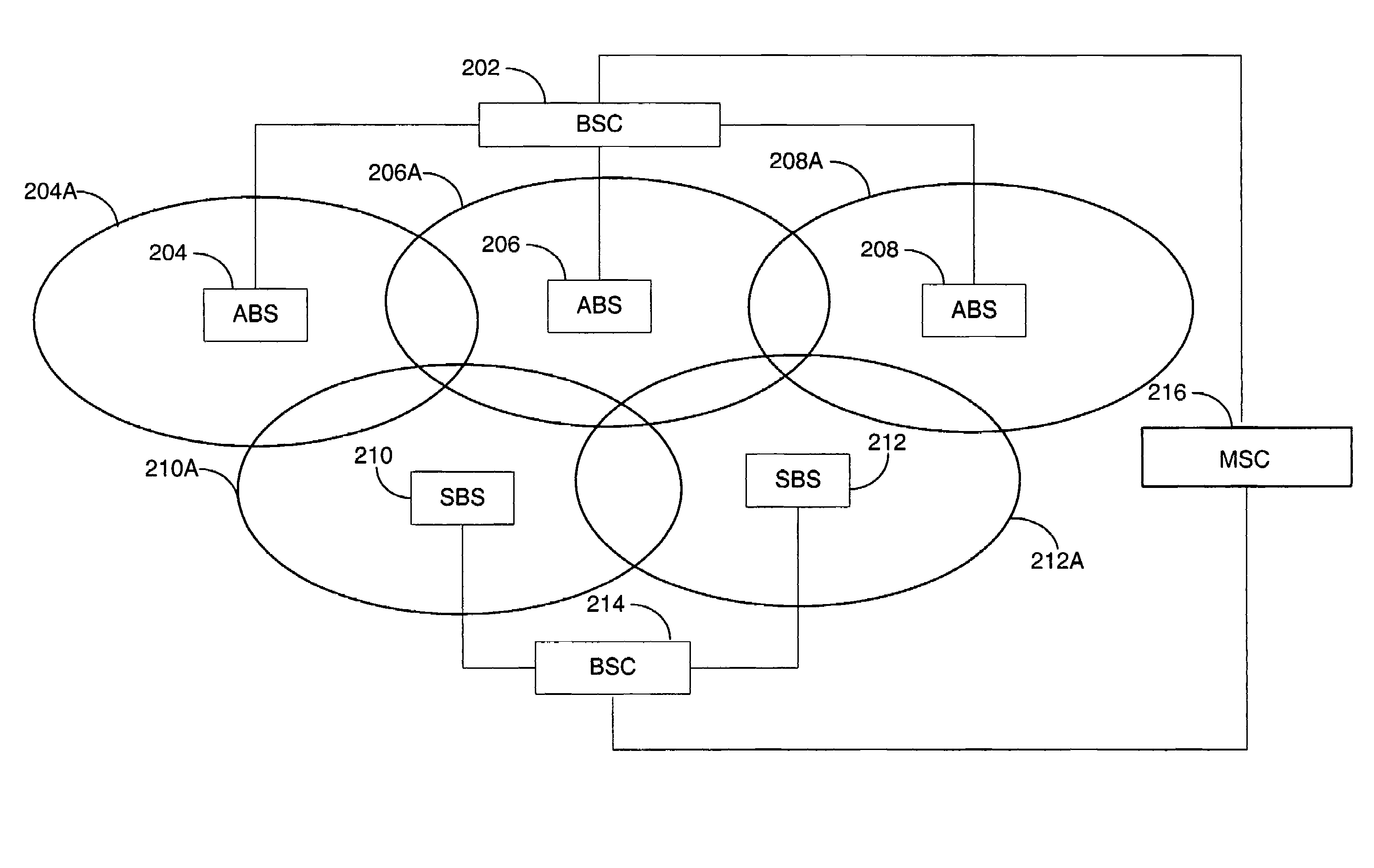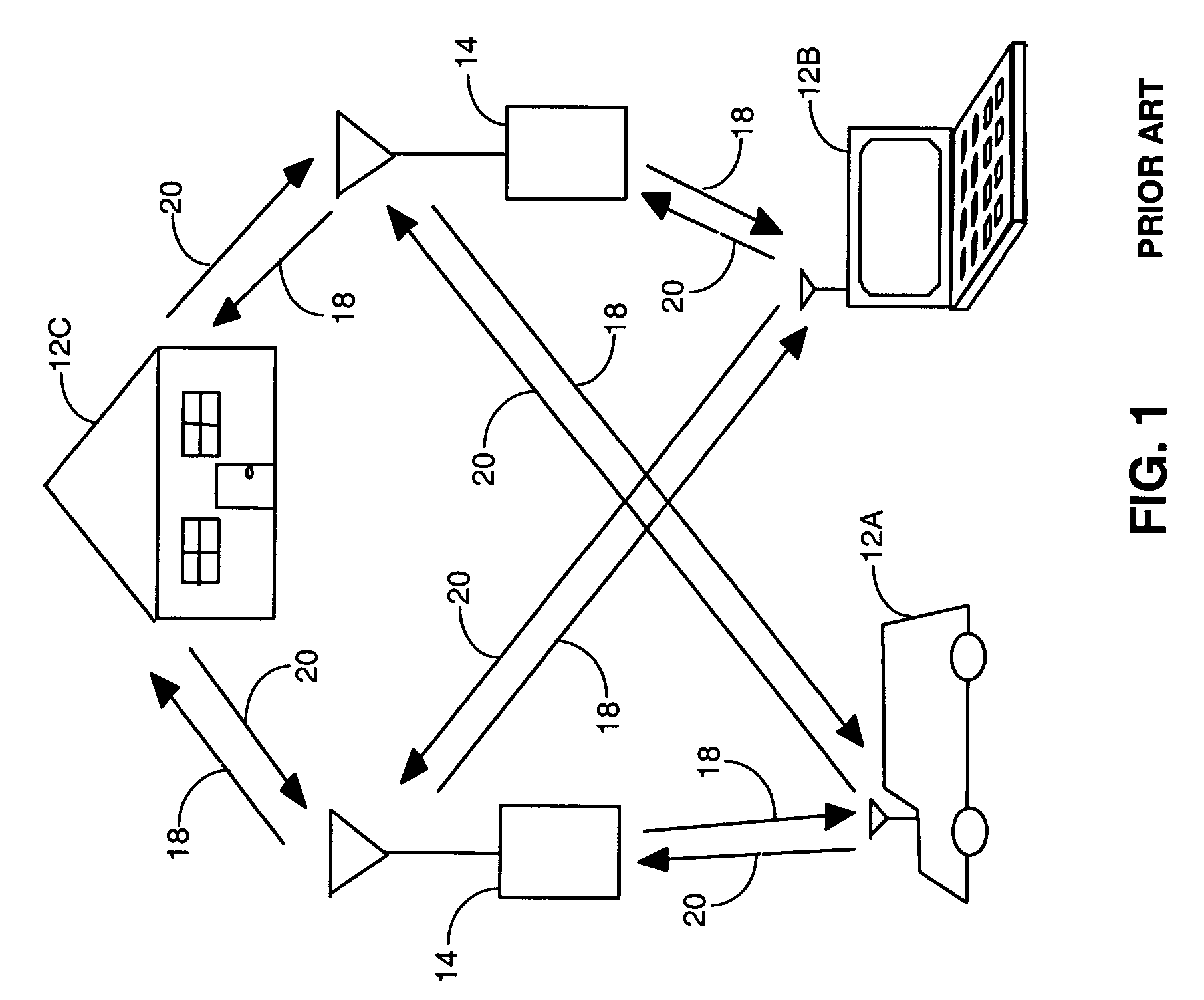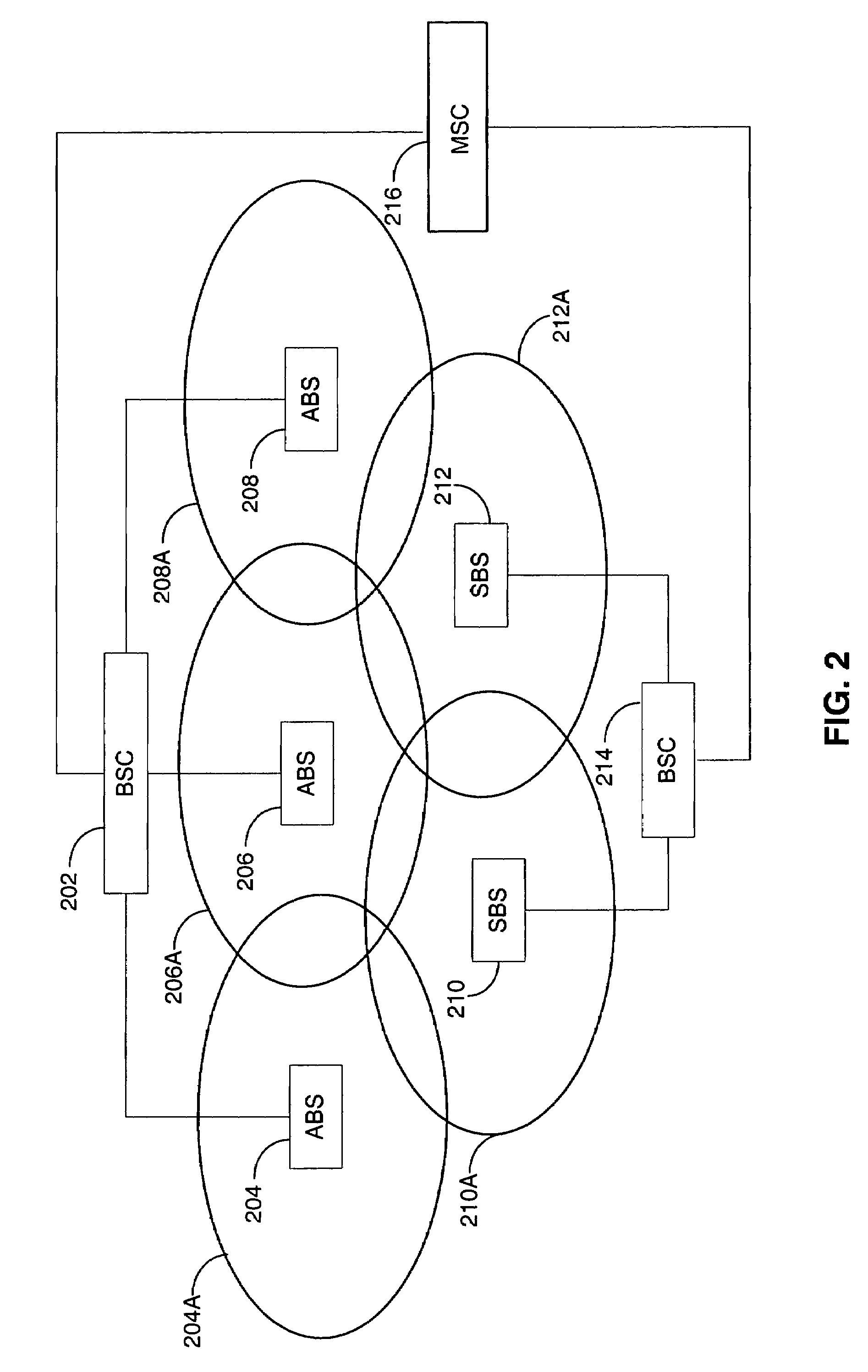Method for handoff between an asynchronous CDMA base station and a synchronous CDMA base station
a technology cdma base station, which is applied in the field of wireless communication systems, can solve the problems of inability to determine which pilot signal is being transmitted by which base station, the remote unit is unlikely to have system time information of synchronous base station to a sufficient accuracy, and the difficulty in receiving universal time synchronization signals using gps, etc., to achieve the effect of reducing the number of ambiguities
- Summary
- Abstract
- Description
- Claims
- Application Information
AI Technical Summary
Benefits of technology
Problems solved by technology
Method used
Image
Examples
first embodiment
[0042]Various embodiments of the present invention will now be described. The present invention seeks to determine the pilot offset and frame phase within system time. As used herein, the term “phase” refers to frame-level phase. Turning now to FIG. 3, a timing diagram of the present invention is illustrated. In FIG. 3, an 80 ms sync channel superframe 300, three 26.67 ms pilot channel frames 302, 304, 306, and a sequence 308-312 of search code bursts are illustrated. These channels are transmitted by one or more of the synchronous base stations 210, 212. The sync channel superframe 300 may be a conventional cdma2000 sync channel superframe. The pilot channel frames 302, 304, 306 may be three consecutive frames of a conventional cdma2000 pilot channel. As used herein, the phrase “pilot channel frame” refers to a single PN sequence period. However, it should be noted at the outset that the numerology used in the Figures is merely exemplary and is used for teaching the present inventi...
second embodiment
[0047]Turning now to FIG. 5, a timing diagram of the present invention is illustrated. In FIG. 5, similar to that of FIG. 3, an 80 ms sync channel superframe 300, three 26.67 ms pilot channel frames 302, 304, 306, and a sequence 508-512 of search code bursts are illustrated. However, the search code channel of FIG. 5 differs from that of FIG. 3 in a number of ways. In FIG. 5, each search code burst 508, 510, 512 is comprised of 16 groups of 16 chips. Each 16-chip group is either a particular fixed chip pattern (e.g., [0100110100111010]) or its complement (e.g., [1011001011000101]). It should be noted that these patterns may be arbitrarily constructed, although it may be preferable to have an equal number of ones and zeros to avoid introducing any transmit power bias. Thus, a total of 216 separate search code patterns are possible. Of these, 1536 are used to represent the PN offset (512 possible) and 80 ms phase (3 possible). A single burst is repeated 32 times throughout, and aligne...
third embodiment
[0048]A timing diagram of the present invention is illustrated in FIG. 6. In FIG. 6, a sequence of primary search code bursts 608 and a sequence of secondary search code bursts 610A-614B are illustrated, along with three consecutive pilot channel PN frames 302-306. The sequence of primary search code bursts 608 are common to all base stations transmitting the primary search code bursts 608. Each primary search code burst 608 is identical and repeated every X microseconds, where X in the exemplary embodiment of FIG. 6 is 625 microseconds. The primary search code bursts 608 are aligned with the beginning of an 80 ms system time frame 600. In other words, the first primary search code burst 608 occurs at the beginning of each 80 ms system time frame 600, and is repeated throughout the frame 600.
[0049]A repeating sequence of secondary search codes 610A-614B is transmitted separately from the primary search codes 608. The secondary search codes 610A-614B are a repeating sequence of two-b...
PUM
 Login to View More
Login to View More Abstract
Description
Claims
Application Information
 Login to View More
Login to View More - R&D
- Intellectual Property
- Life Sciences
- Materials
- Tech Scout
- Unparalleled Data Quality
- Higher Quality Content
- 60% Fewer Hallucinations
Browse by: Latest US Patents, China's latest patents, Technical Efficacy Thesaurus, Application Domain, Technology Topic, Popular Technical Reports.
© 2025 PatSnap. All rights reserved.Legal|Privacy policy|Modern Slavery Act Transparency Statement|Sitemap|About US| Contact US: help@patsnap.com



